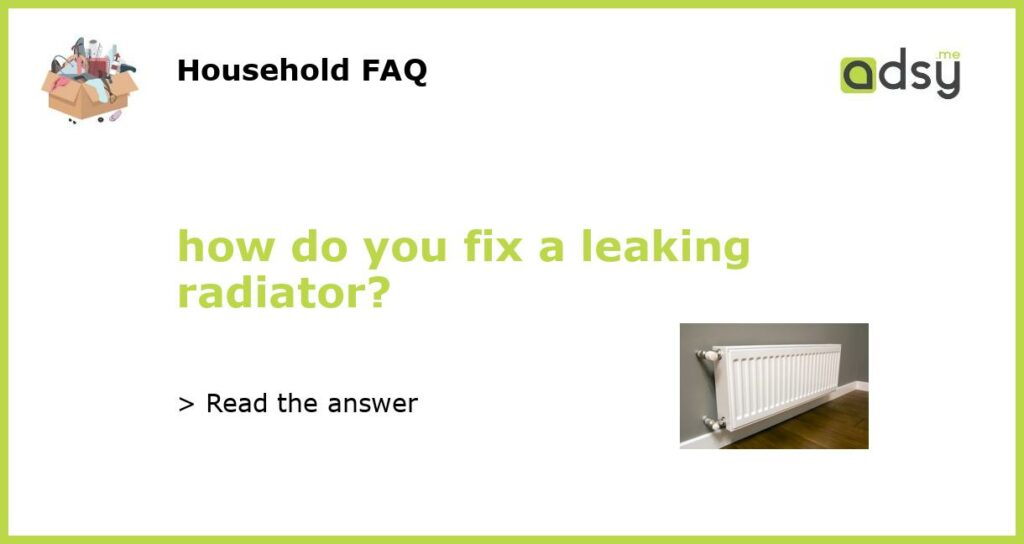Assess the Problem
If you have a leaking radiator, the first step is to assess the problem. Is the leak minor or major? Is it a slow drip or a constant flow of water? Understanding the extent of the leak will help you determine the best course of action.
Turn off the Water Supply
Before you start fixing the leak, it’s important to turn off the water supply to the radiator. Locate the shut-off valve connected to the radiator and turn it clockwise to close it. This will prevent any further water flow to the leaking radiator and allow you to work on it safely.
Identify the Source of the Leak
The next step is to identify the source of the leak. Common areas where radiators tend to leak include valves, connections, and the radiator itself. Thoroughly inspect these areas to pinpoint the exact location of the leak.
Fix the Leak
Once you have identified the source of the leak, you can proceed with fixing it. The exact method will depend on the type of leak and the specific area that needs repair. Here are some common fixes for leaking radiators:
- Valve Replacement: If the leak is coming from a faulty valve, you may need to replace it. Turn off the water supply, remove the old valve using a wrench, and install a new one. Apply plumber’s tape to the threads of the new valve for a secure connection.
- Pipe or Connection Repair: If the leak is occurring at a pipe or connection, you can try tightening the fittings with a wrench. If that doesn’t stop the leak, you may need to replace the damaged section of pipe or connection.
- Radiator Patching: If the radiator itself is the source of the leak, you can use a radiator patch kit to seal the hole. Clean the surface around the leak, apply the patch according to the kit’s instructions, and allow it to cure.
- Professional Assistance: If you’re unsure about how to fix the leak or if it’s a major problem, it’s recommended to seek professional assistance from a plumber or radiator specialist.
Test for Leaks and Replenish the Water
After fixing the leak, it’s important to test for any remaining leaks. Turn on the water supply and closely monitor the radiator for any signs of water seepage. If there are no leaks, you can proceed to replenish the water in the radiator if necessary.
Remember to follow the manufacturer’s instructions for filling the radiator with water or coolant. Ensure that the water level is within the recommended range and check for any fluctuations over the next few days to ensure that the leak is completely fixed.






